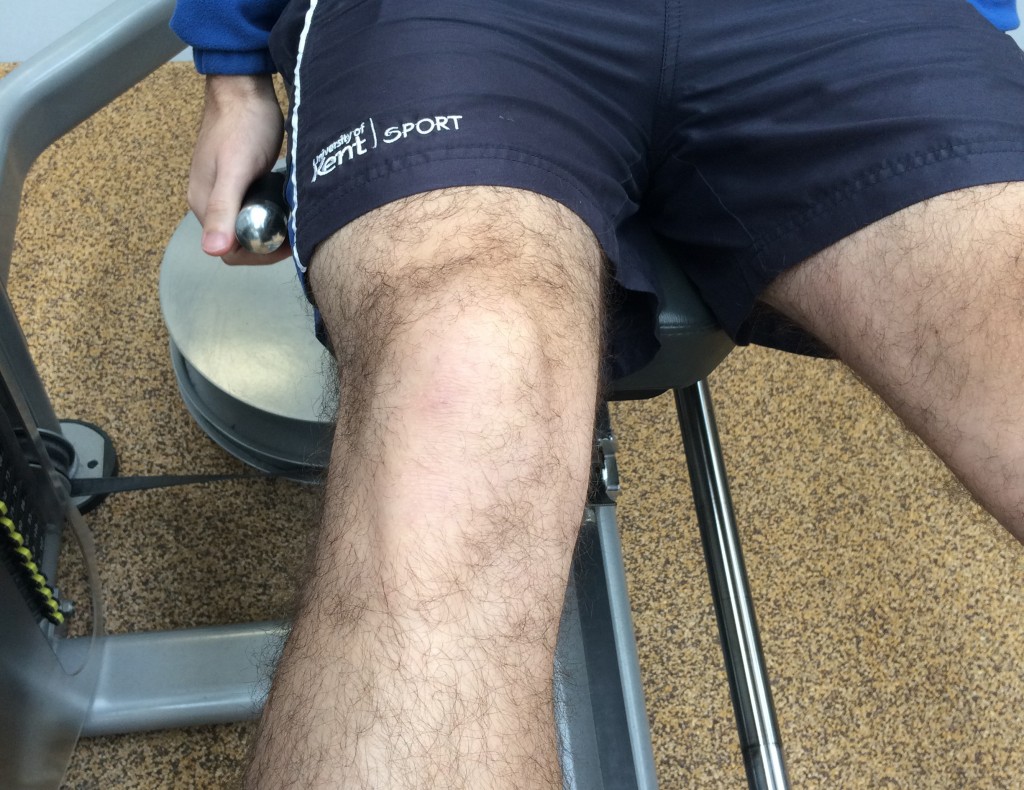Kent Sport physiotherapist Vicky Annis examines the causes of runners knee and what can be done to combat this condition.
What is runner’s knee? And who is at risk?
The technical term for runner’s knee is patellofemoral pain syndrome (PFPS). It is the most common knee injury. It can affect one or both knees and is characterised by a dull pain that is “behind” or “around” the kneecap. Typical aggravating motions include squatting, running (especially downhill), descending stairs, and prolonged sitting. Like most running injuries, runner’s knee is an overuse rather than a traumatic injury.
Risk factors:
Although pinpointing a single cause of runner’s knee is difficult, some reasons include:
- Overuse repeated bending or high stress exercises can irritate the knee cap joint
- Direct trauma to the knee like a fall or knock
- Misalignment if any of the bones are slightly out of their correct position or misaligned physical stress won’t be evenly distributed through your body resulting in certain parts of your body being subject to higher stresses.
- Weak thigh muscles or muscle imbalance weakness in thigh muscles can cause a disproportional load on isolated sections of the kneecap leading to abnormal wear patterns and pains
- Wider pelvis women are thought to be at higher risk, as the pelvis tends to be wider, resulting in a greater angling of the thigh to the knee
- Changes in loads you should only increase the volume or intensity of your workout gradually and should also factor in a lighter week every so often to allow for recovery time
- Footwear it is important that you wear appropriate footwear. Some people may require more specific trainers, while others may need more cushioning. It is also important to replace your trainers regularly. It is important to not just go by how the trainer looks on the outside, as this will not give you a gauge of what the sole is like
- Training surface changing where you train can also put you at risk of injury. Your body needs time to adapt to the surface you train on
Symptoms include:
Sharp and sudden pain behind or around the kneecap.
Dull and chronic pain behind or around the kneecap.
Pain when you flex the knee, when walking, squatting, kneeling, running and cycling.
The pain may be worse when walking downstairs/downhill.
Swelling around or underneath the kneecap.
Popping or grinding sensations in the knee. Occasionally you may feel the knee gives way.
Possibly tenderness if you push against the kneecap itself.
Prevention:
To prevent runner’s knee, there are some precautions you can take:
- Running surfaces Running on softer surfaces
- Footwear Replace footwear often to ensure that the sole is safe to use
- Gradually increase mileage or intensity
- Stay in shape Make sure your overall health and conditioning are good
- Stretch Do a five-minute warm-up followed by stretching exercises before you run or perform any activity that stresses the knee
- Use proper running form Lean forward and keep your knees bent. Try to run on a soft, smooth surface. Avoid running on concrete. Walk or run in a zigzag pattern when going down a steep incline
Treatment:
Runner’s knee is an easily treatable injury with a little patience. At the first sign of pain cut back your mileage. The sooner you lessen the knees workload, the faster the healing process can begin. We recommend massage to tackle any muscle imbalances and physiotherapy to assess for any biochemical issues.
- Education: understanding why you came to have this injury will help to avoid recurrence. This is a key part of the treatment. It is important to look back and see if you have made any training errors related to load or training surface
- Correcting any biochemical issues: this will involve assessing how you move, and using mirrors and videos to help to teach you new movement patterns. It is likely to involve improving glutes and quads strength and activation, and sometimes muscle stimulators may also be used to make changes more quickly if you are very weak. There are a number of different exercises that target these muscles, including squats, single leg squats and lunges. However, pain is a big inhibitor to muscle function so it is important that the exercises are comfortable. It is worth understanding that doing these exercises without appropriate instruction and supervision may worsen the condition.
- Soft-tissue release and stretching: Each person will present differently. Some people have tightness in their hamstrings, calves and quads, and therefore soft tissue release and stretching may be appropriate.
- Orthotics: If you do roll your feet in excessively then you might need an orthotic device – which is an insole you insert into your shoe to help support the arches in your feet.
- Physiotherapy/Massage can assess alignment from head to toe and deal with any muscular issues.
- Leg Press exercises focusing on double and single leg repetitions to strengthen the muscles around the joint.
It’s possible to train through runner’s knee – you may just need to reduce running volume or just run every other day while you concentrate on the rehab exercises. To reduce the symptoms, alignment is key.
If you are suffering from runner’s knee and need some expert advice and guidance, please contact the Kent Sport Physiotherapy Clinic by calling 01227 824375 or emailing physio@kent.ac.uk.

